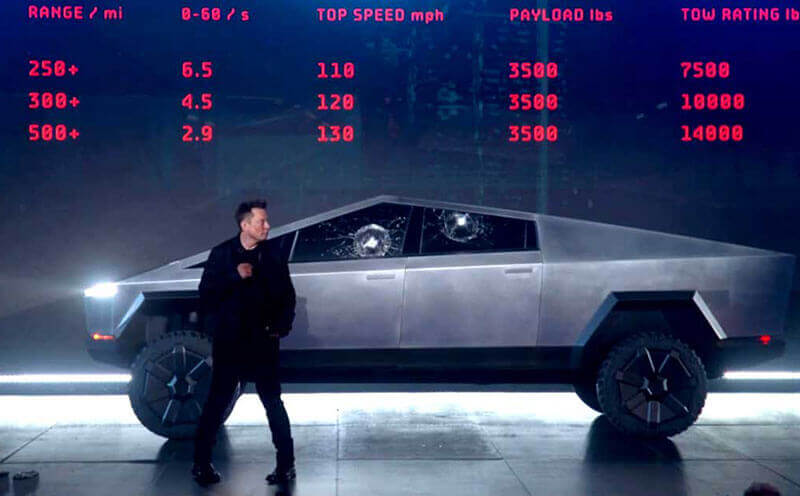Last week, many of us watched enthusiastically as Elon Musk unveiled Tesla’s latest innovation, the Cybertruck. This spaceship of a truck had countless innovative features— a shell that couldn’t be smashed with a sledgehammer, a bed cover that rolled up into the truck, torque, and power that put the F-150 to shame…etc. Unfortunately (or was it?), Musk found it’s Achilles heel live on stage with an audience of millions of people. Regardless of the ingenuity that defined Tesla’s newest product, press coverage has since focused a lot of its attention on the glass that shattered when a ball bearing was hurled at it while Musk attempted to boast the indestructibility of the vehicle.
While this “failure” was no doubt embarrassing, Musk responded to this public blunder by shrugging it off and saying, “eh, there’s room for improvement.” Steve Jobs experienced similar embarrassments, including when he couldn’t connect to Wi-Fi while demoing the iPhone 4 in 2010. While some call these failures, I see them as casualties of pushing boundaries to pull off what others are afraid to even attempt. Under tight timelines, insurmountable pressure, and a lot riding on the successes of these product launches, is it that surprising that there are minor flaws that come up (that no doubt end up being addressed prior to rolling out those products to the masses)? In the same vein, isn’t the quest for accomplishing the impossible without fear also what separates these leaders from the rest and ultimately leads to their successes?
Some judge people like Musk and Jobs as careless and sloppy. In reality, their lack of fear is what allows them to push the boundaries towards greatness and ingenuity in ways many of us could only strive to. One of the traits that seem to differentiate leaders like this from those who are truly wreckless is their ability to find problems early and fix them. They push the boundaries to the point of breaking things, but they fix them fast and often – leading to more innovation than if they had taken the safest route. Aren’t we glad they found these issues early rather than finding out later when drivers’ windshields would shatter and people’s phones be rendered useless?
As a marketing agency, we are charged with innovating on behalf of our clients, pushing their creative boundaries to achieve sometimes seemingly impossible results. There is a lot of pressure to deliver, many moving parts contributing to every deliverable, and changes to the landscape happening on a daily basis. Our jobs are to venture into the unknown and do things that have never been done before. We have processes and tools galore to minimize risk and identify potential breaking points prior to and throughout the execution process. But we are usually still treading into murky waters with unknowns we couldn’t possibly predict. If our goal is to innovate, then failures along the way (possibly often) are realities we have to accept. How small and often the failures are, as well as how we react to the “failures” and pivot are what allows us to minimize overall risk while still attempting to accomplish things rarely, if ever, done before. While of course we should always focus on quality, testing, and delivering good results; we should focus equal or greater effort on building process around correcting and pivoting early and often while still aiming at the end goal of any campaign, website launch, creative deliverable or any other desired result.
Moving into the third decade since Y2k (when the world was supposed to end because technology was going to fail with the changing of a millenium), we have never had better opportunities to innovate and find new ways to achieve success for our clients. The technology at our disposal is unprecedented, opportunities to be creative are infinite, and we can measure success more precisely than ever before. With the tactics and tools we use growing at an exponential rate, our tolerance for risk as we try new things has to be high if we wish to do things better, faster, and with better results than others. One of our values at Swarm is “Identify failures early and often, fix them fast.” Processes are built not only around mitigating future risk and preventing failure, but also around reacting to failures and improving. Failing early and often is, in fact, our way of mitigating larger risks of failing slow and failing big.
We are cooking up some new things here at the Hive that we look forward to working with our clients on in the coming year. We plan to fail fast and “fail small” so that we can push the envelope in achieving success.
“Who’s coming with [us]?” – Jerry Maguire
